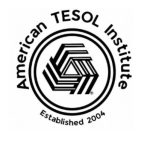In the digital age, storytelling has evolved beyond the traditional pen and paper, embracing new technologies that enhance creativity and engagement. Whether you’re writing a novel, producing a video, or creating a digital narrative, mastering the tools of modern storytelling can help you craft compelling stories that resonate with audiences. From brainstorming to character development and storyboarding, today’s digital resources offer endless possibilities for creating immersive narratives.
Here’s how you can harness technology to enhance key elements of storytelling:
1. Brainstorming with Technology
The first step in storytelling is coming up with ideas. Technology offers a range of tools to help brainstorm and organize thoughts. Gone are the days of scribbling in notebooks; now, collaborative digital platforms and apps can help you quickly capture and expand your creative ideas.
- Mind Mapping Tools: Tools like MindMeister or XMind allow writers to visually map out ideas, create connections between plot points, and explore different directions a story can take.
- Idea Generation Apps: Apps like Coggle or Trello provide virtual spaces where you can organize ideas, track your thought process, and even share them with collaborators for feedback.
These platforms enable both individual brainstorming and group collaboration, allowing storytellers to engage in dynamic, flexible idea development.
2. Mastering Story Elements
A strong story relies on key elements such as plot, setting, theme, and conflict. Understanding these elements is essential for building an engaging narrative. Digital tools can help you structure these components effectively.
- Plot Generators: Websites like Plot-Generator.org offer prompts that guide writers through building a cohesive storyline by combining different plot elements. This can be especially useful if you’re stuck or need inspiration.
- World-Building Tools: For those writing fiction or fantasy, apps like World Anvil help create detailed settings, from maps to cultural details, adding depth and realism to your story.
These tools are designed to help writers stay organized and ensure that all essential story elements are integrated seamlessly.
3. Character Development
Creating believable, relatable characters is a crucial aspect of storytelling. Modern technology offers a variety of tools to help develop characters with depth and complexity.
- Character Creation Software: Programs like Plottr or Campfire allow writers to build character profiles that track personality traits, backgrounds, motivations, and relationships with other characters.
- Visual Character Creators: Tools like Hero Forge or Artbreeder allow you to visually design and customize character appearances, helping to inspire character traits and personality by giving them a tangible look.
These resources are excellent for ensuring characters remain consistent throughout your story, making them more engaging and relatable for readers.
4. Storyboarding for Visual Storytelling
Storyboarding isn’t just for filmmakers—it’s a vital part of planning any narrative that incorporates visuals. Whether you’re writing a script, a graphic novel, or preparing a multimedia project, storyboarding can help organize your story visually.
- Digital Storyboarding Tools: Programs like Storyboard That or Canva provide easy-to-use templates for laying out scenes. You can sketch the flow of your story, map out key scenes, and visualize how the story will unfold.
- Script Writing Tools: Tools such as Celtx are invaluable for organizing a screenplay or a video project, allowing writers to integrate storyboarding and scriptwriting into one seamless process.
Storyboarding helps ensure a cohesive narrative flow and is a great way to plan visual storytelling.
5. Collaborative Writing Platforms
Collaboration is a crucial part of modern storytelling, whether working with other writers, illustrators, or producers. Technology makes it easier to collaborate and refine stories in real time.
- Google Docs and Microsoft OneNote allow multiple users to collaborate on a story simultaneously, making edits and suggestions in real time.
- Platforms like Scrivener are tailored to writers, providing tools for organizing research, characters, and scenes, while allowing for collaborative feedback.
Collaborative tools offer new possibilities for creative partnerships, making the storytelling process more dynamic and interactive.
Conclusion: Crafting Digital Narratives
Modern-day storytelling is a fusion of creativity and technology. By utilizing tools for brainstorming, character development, and storyboarding, you can streamline your writing process and create more immersive, polished stories. Whether you’re an aspiring author or a seasoned writer, embracing these technologies will allow you to tell stories in innovative, engaging ways.
The ins and outs of storytelling have changed, but the essence remains the same—good stories captivate, inspire, and connect people. Let today’s digital tools enhance your ability to bring those stories to life!


